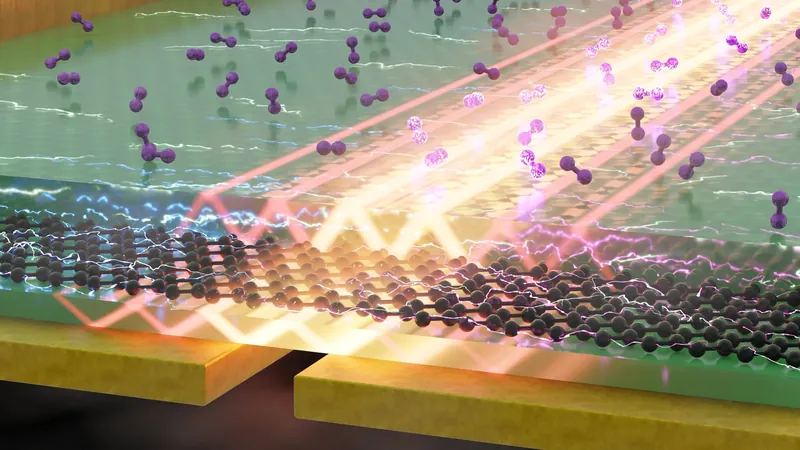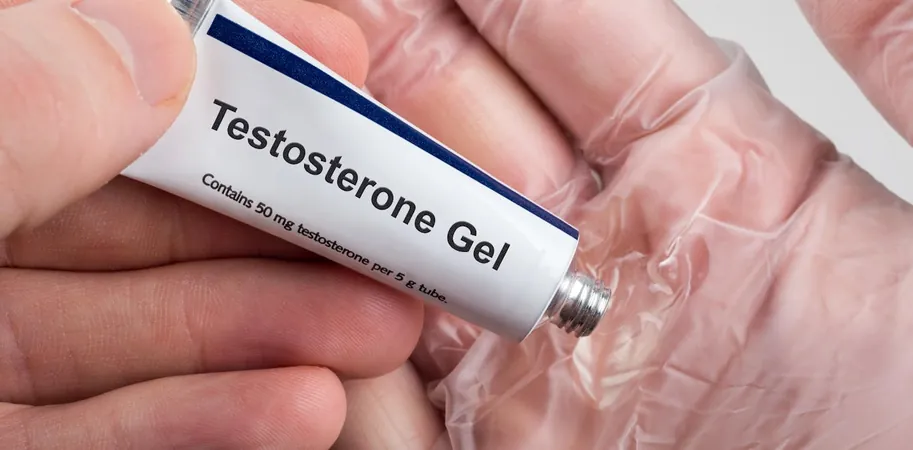
Revolutionary On-Chip Device Unleashes the Power of Light to Detect Molecules!
2024-11-18
Author: Noah
Groundbreaking Technology for Molecular Detection
In an exciting advance for molecular detection technology, researchers have unveiled a groundbreaking on-chip device that utilizes exotic light rays to identify molecules by their unique infrared vibrational 'fingerprints.' This innovative detector converts incoming infrared light into ultra-confined 'nanolight,' in the form of phonon polaritons, enhancing both its sensitivity and the ability to analyze the vibrational characteristics of molecular layers just a nanometer thick.
Published in the esteemed journal *Nature Communications*, this remarkable technology could pave the way for ultra-compact platforms in molecular and gas sensing, all while operating at room temperature—a notable factor for practical applications in various fields.
Unique Molecular Fingerprints
Every molecule possesses a unique vibrational fingerprint, akin to human fingerprints, which can be revealed when illuminated with infrared light at specific frequencies. This ability to detect different types of molecules and gases not only holds promise for future product development but also plays a critical role in safety, enabling the identification of hazardous substances.
Advancements Over Traditional Methods
Traditionally, infrared fingerprint spectroscopy has been the go-to method for molecular identification. However, the challenge of detecting small quantities of organic molecules—due to their minuscule size compared to infrared wavelengths—has limited its efficacy. To overcome this, recent advancements like Surface-Enhanced Infrared Absorption (SEIRA) spectroscopy have made significant strides. SEIRA enhances molecular vibrational signals using rough metal surfaces or metallic nanostructures, allowing for the study of minute material quantities.
Utilization of Phonon Polaritons
The shift towards utilizing phonon polaritons—specifically the hyperbolic phonon polaritons found in thin layers of hexagonal boron nitride (h-BN)—has unlocked new potential for enhancing SEIRA's sensitivity. 'Phonon polaritons have shown promising results in our previous work for SEIRA spectroscopy of nanometer-thin molecular layers and gas sensing,' explains Prof. Rainer Hillenbrand from Nanogune.
Collaboration and Innovation
However, conventional SEIRA spectroscopy requires cumbersome equipment, creating hurdles for miniaturization and on-chip applications. Professor Frank Koppens from ICFO noted that their exploration into graphene-based infrared detectors, operative at room temperature, reveals that phonon polaritons can enhance detector performance significantly.
Through a collaborative effort involving researchers from Nanogune and ICFO, alongside theoretical insights from experts at the Donostia International Physics Center and the Instituto de Nanociencia y Materiales de Aragón, the team has achieved a monumental feat: the first on-chip phononic SEIRA detection of molecular vibrations. This remarkable approach utilizes ultra-confined hyperbolic phonon polaritons to directly detect molecular fingerprints within the photocurrent of a graphene-based detector—eliminating the need for bulky infrared equipment altogether.
Implications and Future Directions
The implications of these findings are enormous. Dr. Sebastián Castilla from ICFO highlights the device’s potential, pointing out that its integration with microfluidic channels could transform it into a true 'lab-on-a-chip.' This innovation could revolutionize medical diagnostics and environmental monitoring, offering the ability to identify specific molecules in tiny liquid samples swiftly and effectively.
As research continues, the future of molecule detection looks brighter than ever, ushering in a new era of innovative solutions that could vastly improve public safety and healthcare technologies. Stay tuned for more updates as this technology further develops and becomes a game-changer in various scientific fields!









 Brasil (PT)
Brasil (PT)
 Canada (EN)
Canada (EN)
 Chile (ES)
Chile (ES)
 España (ES)
España (ES)
 France (FR)
France (FR)
 Hong Kong (EN)
Hong Kong (EN)
 Italia (IT)
Italia (IT)
 日本 (JA)
日本 (JA)
 Magyarország (HU)
Magyarország (HU)
 Norge (NO)
Norge (NO)
 Polska (PL)
Polska (PL)
 Schweiz (DE)
Schweiz (DE)
 Singapore (EN)
Singapore (EN)
 Sverige (SV)
Sverige (SV)
 Suomi (FI)
Suomi (FI)
 Türkiye (TR)
Türkiye (TR)